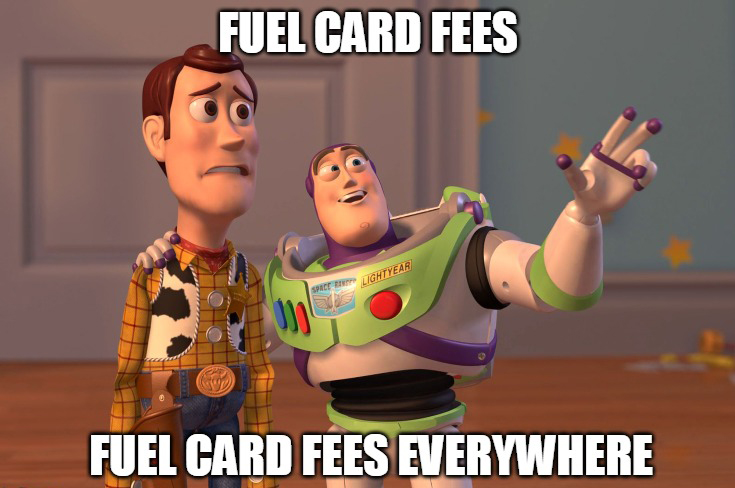Are you paying fuel card fee? Unfortunately, far too often customers don’t have a complete understanding of what they’re being charged for at the end of each month on their fuel card invoice.
These fees are often hidden in the small print of the credit application and can be overlooked on a fuel card invoice that has multiple pages.
As a result, these fees can add up to hundreds or thousands of dollars over the course of a year. By this point, you might be wondering just how much you’re paying in fuel card fees.
To help you find out, let’s take a look at some of the common fuel card fees and how to spot fuel card fees on your invoice.
Common Fuel Card Fees
- Account setup fee – one time fee charged for opening an account
- Per card fee – usually charged on a monthly basis per card
- Card replacement fee – charged every time a new card is ordered or replaced
- Transaction fee – charged per transaction
- Invoice fee – charged per invoice
- Custom reporting fee – charged per requested report
- Out of network fee – charged at stations that are deemed out of network

How Much Fuel Card Fees Can Be Costing Your Company
One of the most well-known fuel card companies charges monthly $4 per card for their regular program, $8 per card for their plus program, and $12 per card for their premium program.
If you have 25 cards for your fleet, that $1,200 to $3,600 per year in “card fees” before you even get to any of the fees listed above.
That’s a lot of money, when there are fuel card companies that charge no fees.
How To See If You Are Paying Fuel Card Fees
Step 1: Comb through your invoice
The fees are often posted on the last page of the invoice after the invoice summary section. Look for small line item fees.
If you don’t see any there, check with your accounts payable department and see if you are charged a bill at the beginning of the year or quarter that contains just fees and no fuel purchases.
Step 2: Compare your invoice to receipt totals
The fees could be hidden in the transaction cost. For example, the price was $2.50 per gallon at the gas station, but you were charged $2.55 per gallon on your invoice. If you don’t have a receipt to match it to you wouldn’t know what the posted price at the gas station was at the time.
Step 3: Google “your fuel card company name” complaints
This will often reveal companies that currently have complaints about the fuel card company. More than likely these reviews deal with pricing, fees, or customer service.

